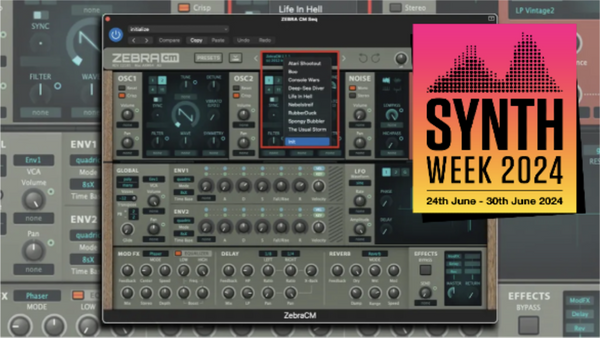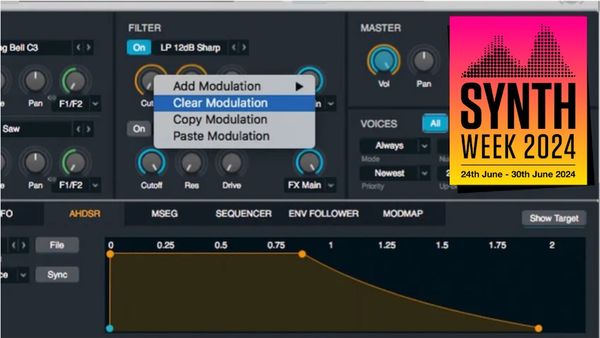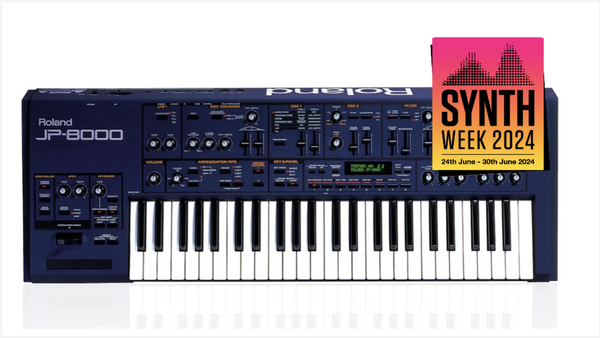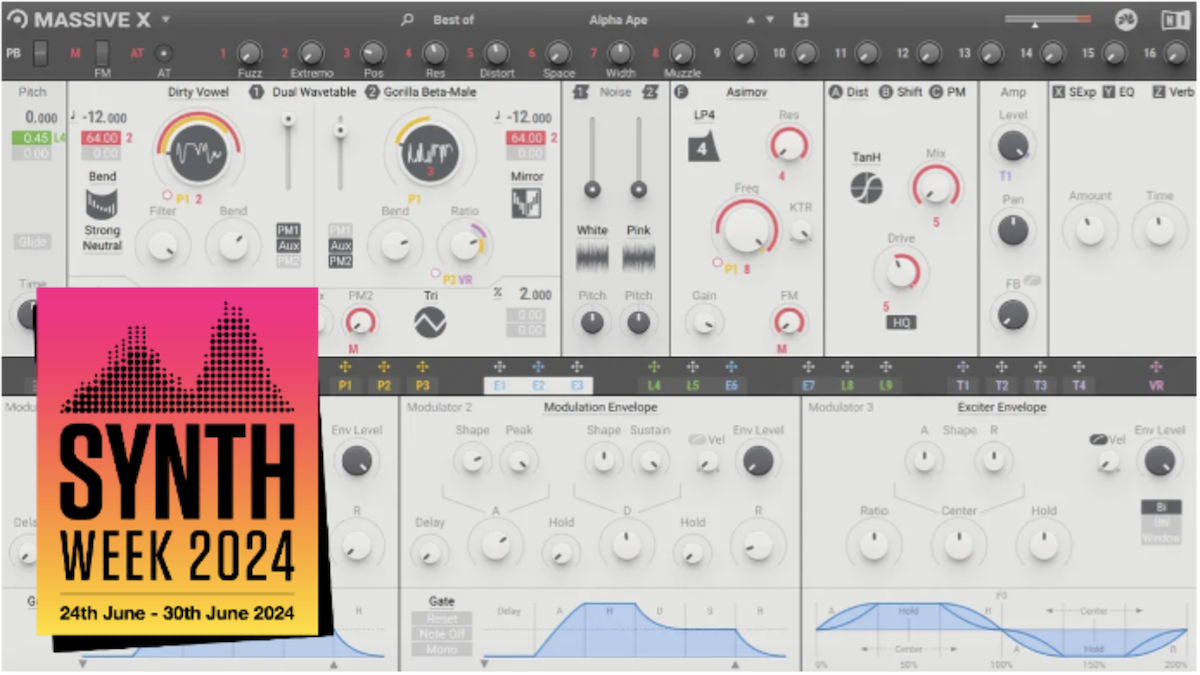
SYNTH WEEK 2024: Bass is a staple element of all kinds of music, from piano compositions to rock or jazz music. While the upper frequencies might be home to hooks and harmonies, it’s the lower frequencies that provide the foundations…
This is particularly true of electronic music, where the quality of a bassline can make or break a track. While there are many ways you can source your bass sounds, synthesis might be the most versatile approach (more on this shortly). Synth bass can come in a multitude of forms, though, from smooth analogue lines to harmonically complex digital patches.
As such, bass synthesis can be both one of the simplest and most complex processes in electronic music making. At the basic end of the spectrum, a solid sub can be made with little more than a simple sine or triangle oscillator, an amp envelope to control volume and a low-pass filter to shape the frequency.
While this might be enough to provide a deep foundation under more complex sounds in your track, for a bassline that cuts through other elements and doesn’t get lost in a mix you’ll need to turn to techniques such as oscillator layering, modulation or distortion.
Today, we’re focussing on bass synthesis in all its forms, guiding you through the basics to some more advanced concepts, ideas and mixing considerations. So, grab whatever hardware or plugin synth you have to hand, and let’s lay down some bass.
Why synthesis?
As with all forms of sound creation, when it comes to making basslines, there’s more than one way to skin the proverbial cat. Traditionally, of course, the lower frequencies in a musical composition would be filled by an acoustic instrument specifically designed to work in that range, such as an upright bass or the lower registers of a piano – or in more recent times, an electric bass guitar.
All of these remain viable options in the electronic realm, as does sampling. There’s no end of quality bass loops and one-shot hits available via the usual sample sources (including numerous available to download from this very site).
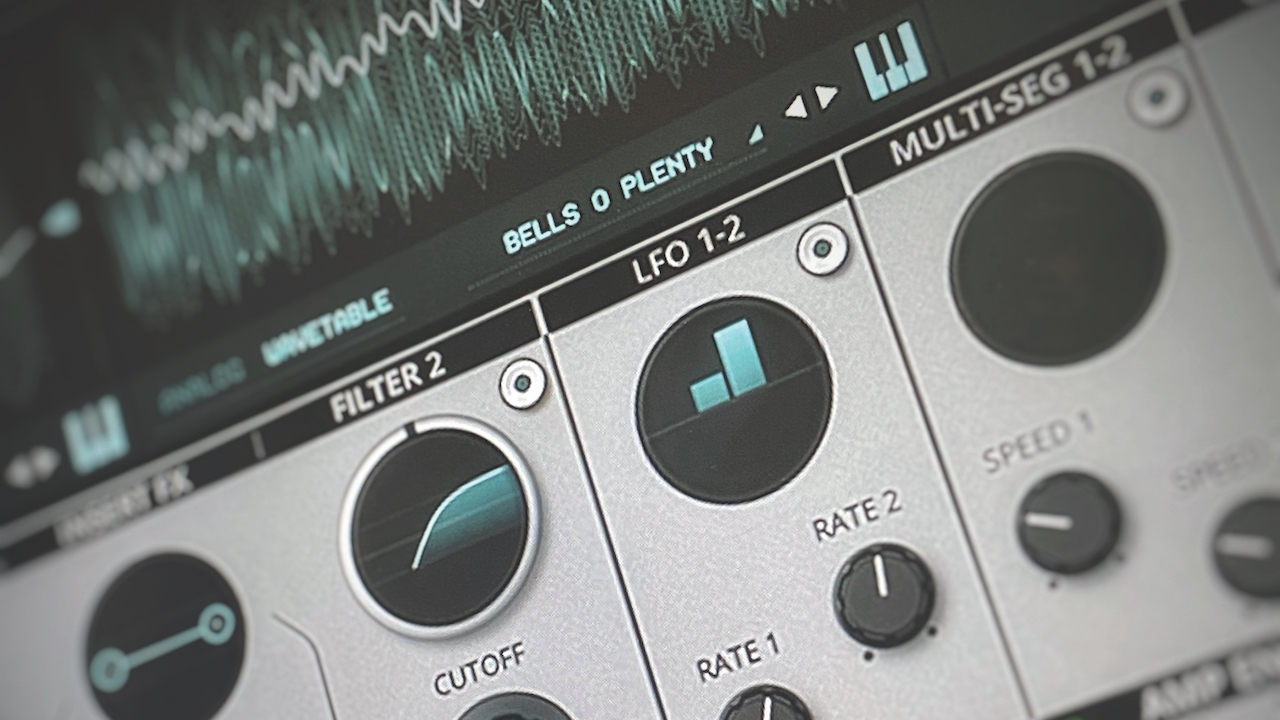
In the electronic music realm, however, synthesising your bass parts from scratch is undoubtedly the most flexible and versatile approach. The advent of modern music technology has changed the way we approach bass sounds on two fronts. On one hand, with the arrival of the first commercial synthesisers in the 1960s and ’70s, the conception of what a ‘bass’ sound could be expanded vastly. Where bass instruments had previously been fairly simple in terms of the timbre, used largely to underpin the more complex harmonies and melodies, synth bass could do far more – it could straddle the divide between adding a low-end foundation and high-end hook.
Secondly, as speaker, headphone and amplification technology has evolved, the range of lower frequencies present within modern music has vastly expanded, too. The concept of sub-bass – bass below 60Hz, at the very bottom of the audible spectrum – wasn’t a consideration 50 years ago, but now plays a vital role in producing music designed for club systems.
Synthesis offers the best set of tools to tackle these conflicting needs
Conversely, portable media, from car stereos to phones and Bluetooth speakers, means that music is regularly consumed on devices that might not translate those lowest frequencies at all. This presents a real challenge for modern music makers – how to craft bass tones that have the power to work on big systems, but also translate to small speakers.
Synthesis offers the best set of tools to tackle these conflicting needs. In the analogue realm, by layering oscillators and applying precise filtering and modulation, we can shape bass sounds that fit perfectly to fill the frequencies our track needs, whether that’s a deep sub or a cutting mid-range bass – or a sound that has elements of both. Digital synthesis techniques such as FM or additive let us take this further still, building sounds from the ground up to create complex, rich synth tones full of movement that span the full frequency range.
Even if you do intend to turn to samples, presets or your trusty bass guitar for your music making, there’s real benefits to exploring how to create synth bass from scratch. An understanding of the basic foundations can help you make the right creative decisions and know how to find the right bass for the job.
Bass basics
Whether you’re using an analogue, virtual analogue, digital or sample-based synth, all approaches share a few general principles that can help you craft solid, characterful bass patches.
Keep things simple
Always try to approach bass design with some method or plan for making sounds, so that you aren’t just trying stuff randomly. First off, decide what type of sound you are going for. Does it need to be punchy? Resonant? Thin? Fat? All of these? Once this has been established, you can then start to think about your sound, the number of oscillators required and types of waveforms you’ll need (more on this over the page).
Often, you’ll find you only need one or two oscillators to make your sound, so always start off with a single oscillator and try getting the sound you’re after, then add more as you need (a basic form of additive synthesis). To a large extent, the success of a single oscillator sound depends on the power and richness of the oscillators in the synth you are using and how you process them.
Every synth has its own character, but try to use one that has powerful oscillators, filters and snappy envelopes like the Korg MS-20, Novation Bass Station II or plugins like Arturia Pigments or Kilohearts Phase Plant.
Oscillator levels
It’s easy to overlook the levels of your oscillators and just set them all to full when making multi-oscillator bass sounds but you can soon hit on undesirable results. The frequencies and waves of each oscillator interact differently depending on how their levels are set against each other and how hard they are driving your synth’s mixer stage. Many synths, particularly analogue ones, allow you to overdrive the mixer stage for added harmonic richness and growl. Though this may be what you’re after it’s no good if you want a clean-sounding bass, so keep your levels in check.
Combining triangle and pulse waves is a great method for achieving a bassy but cutting tone. However, if you set the volume of the pulse wave too high on your mixer and the triangle wave too low, you’ll find you’ll get a harsh sound that cuts through the mix, but with little or no bass presence.
Oscillator detuning
When choosing the pitch of your oscillators, generally start off with them both set to the same octave and work from there. Set both at 32’ – ie a lower octave – then listen to the result. Then set one at 32’ and one an octave above at 16’ and listen, then one at 32’ and one at 8’ and listen, and so on. It often helps to have an oscillator set at a higher octave in the mix, as this will help the bass cut through on smaller speakers as well.
Bear in mind that if you space the pitches of two oscillators too far apart, then you’ll find it harder to get the sound to gel together as there will be a large frequency gap. Sometimes this is a useful effect, but often the closer together the pitches, the more solid your sound. Using subtle amounts of detune – kept to just a few cents – between oscillators can also add chorus, movement and thickness.
Phase cancellation
Using two or more oscillators together can cause phase cancellation. This happens when two oscillators are set to the same wave and one is slightly detuned, with the net result being that they cancel each other out at certain points in their cycles, taking power away from your bass sound. If you hold down a note and the power of the sound appears to be fading in and out at certain points, then it’s likely you have phase cancellation. Adjust the detuning, wave shapes and relative oscillator volumes until the phasing stops.
Sometimes phasing is good, though, creating sounds similar to the classic Reese bass used heavily in techno and drum & bass. Using oscillator hard sync is great for pitch-locked phasing or vocal-like sounds, too. Try syncing osc 1 to osc 2, then using your mod wheel to adjust osc 2’s frequency.
The importance of filters
When it comes to crafting synth bass patches, your source oscillators are obviously important, but a synth’s filter will play just as influential a role.
Almost all analogue-style bass patches will make use of a low-pass filter – one which filters out a certain amount of the higher frequencies to leave just those in the lower ranges. Different slopes, 12db, 16db or 24db (aka 2-, 3- or 4-pole) will apply a differing degree of filtering, resulting in ‘darker’ or ‘lighter’ bass sounds.
The design of the filter itself can play a major role in the character of your bass, too. A Moog ladder filter, for example, is renowned for smooth and deep tones, while Korg’s MS-20 is more aggressive, with self-oscillating resonance that can act as an oscillator by itself. And the way the resonant filter of a Roland TB-303 interacts with the accents and envelope helped create acid house and techno.
Resonance
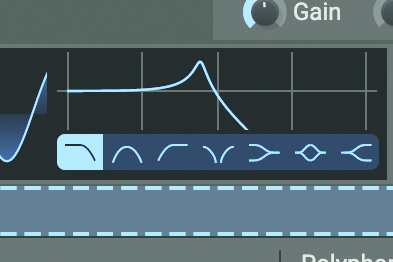
Resonance will create a ‘peak’ at the cutoff frequency. At low levels, this can help to accentuate your bass sound or add a punch in the higher frequencies. Cranked up and modulated, it will create the ‘bubbling’ tones of acid basslines.
Modulation
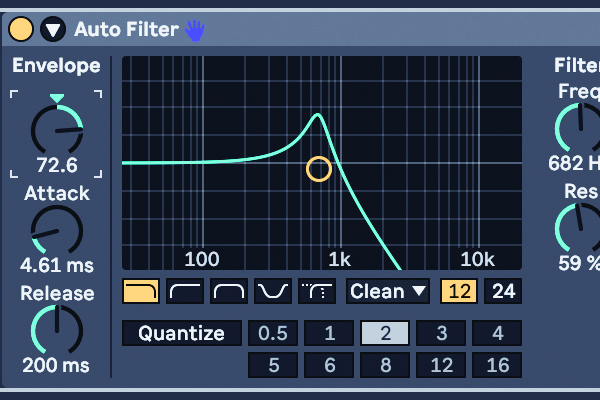
Modulating a filter can be key to bringing a bassline to life. A short, sharp envelope will allow for mid-range ‘punch’ whilst keeping the body of your bass low and subby. Slowly increasing filter cutoff is a great way to ‘build’ your track.
Drive
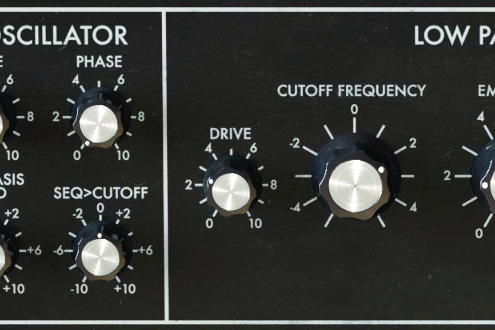
Many synth filters include some kind of drive or distortion. Cranking your synth patch at the filter stage can be a great way to add extra harmonics that will add much-needed mid-range presence to help your sound cut through.
What's in a waveform?
Pick any synth and whether it’s digital or analogue, the chances are that it will employ a number of oscillators or sampled waves as the building blocks of every sound. Take for example the Minimoog – it has three oscillators, each of which has several waveforms including triangle, reverse saw tooth (ramp), square wave and two pulse waves (one narrow and one wide).
These waves each have their own unique sonic characters, which give Minimoog synth bass sounds a particular feel. The most effective synth bass sounds employ anywhere from one to three oscillators, using a blend of different waveforms to add low-end, bite, width and air to the sound.
Sine

A sine wave is the ‘purest’ form of synth waveform, containing only the fundamental frequencies with no overtones. As a result, it sounds clean and smooth. Sines are perfect for creating simple, powerful sub bass, although you’ll need to layer an additional waveform over the top, or apply distortion or modulation, in order to hear it on many speaker setups.
Triangle

A triangle wave is soft and contains odd harmonics from the fundamental frequency (the lowest point on the wave’s cycle). It doesn’t have much bite, midrange or tops, though it has a little top-end buzz and is perfect for adding weight.
Saw

A sawtooth wave is the basis for many bright or cutting sounds, and contains both odd and even harmonics. It has a nice bite, buzz and bright edge to its character, while it sounds solid enough on its own to make bass and lead sounds (especially when filtered).
Square

Like a triangle wave, a square wave contains only odd harmonics, giving it a more hollow sound. However, its flat edges and corners impart its character with a more solid tone and some brightness, making it suitable for hollow, yet cutting basses and leads.
Pulse

A pulse wave’s character is biting, yet quite nasal, and is suitable for thinner-type basses and leads. It contains both odd and even harmonics. Evolving bass sounds can be made by varying the width of the wave (using an LFO to modulate) or by manually changing the pulse width.
Wavetables and digital bass
If you own NI’s original Massive, load up its Brutal Electro preset, play a few low notes and tweak the synth’s macros. This wavetable patch was infamously overused in dubstep circles in the 2010s, and you’ll recognise its thick, modulating character.
A wavetable synth’s oscillator is a collection of single-cycle waveforms, scanning through which can create harmonically-complex tones. Older hardware wavetable synths had a ‘stepped’ feel when sweeped, but modern plugins now provide smooth scanning between wave types for unique harmonic textures.
Massive isn’t the only wavetable synth – its follow-up, Massive X, updates the concept, while the likes of Kilohearts Phase Plant, Arturia Pigments or Ableton’s Wavetable all offer a more contemporary take.
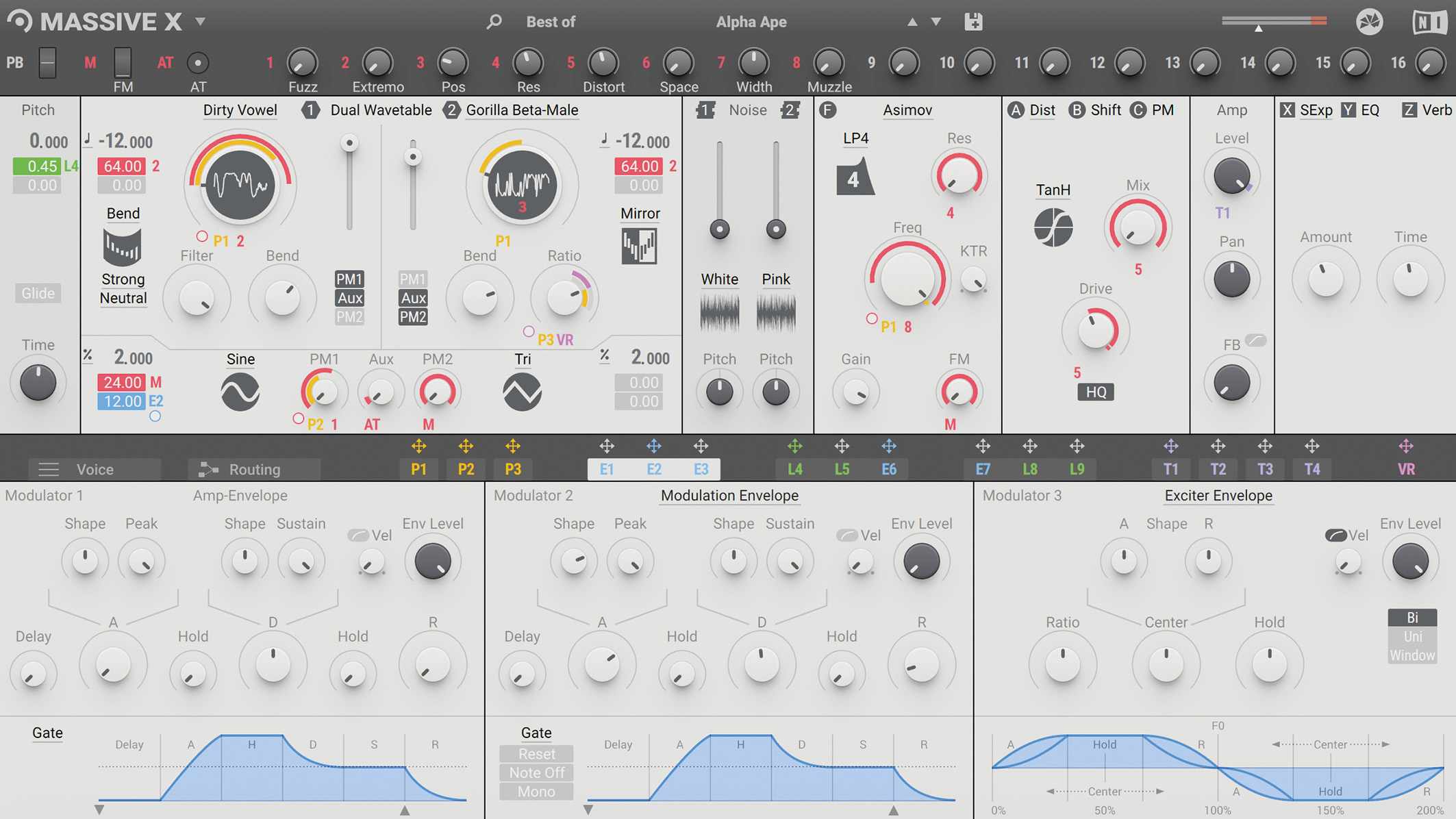
Many modern ‘bass music’ artists, the likes of Skrillex and Noisia among them, have attributed part of their bass sound to FM synthesis, a digital type of synthesis famous for complexity and dissonance. Made popular in the early ’80s by the realistic bell and piano-like tones of the Yamaha DX7, FM synthesis uses the frequency of ‘modulator’ oscillators (or operators) to modulate the frequency of ‘carrier’ operators.
NI’s FM8 and Ableton Operator are stalwart FM plugins, while Tracktion’s F.’em is probably the most powerful FM synth going. FM has made a resurgence in hardware, too, with the likes of Elektron’s Digitone and Korg’s Opsix both being powerful machines for bass design.
All sounds are made up of multiple sine waves, or harmonics, and additive synthesis combines large numbers of these ‘partials’ to create harmonically rich and interesting synth tones. NI’s Razor is a staple additive synth plugin with subtractive-like parameters, integrating features like filtering and reverb at a deeper harmonic level. Logic’s Alchemy and Arturia Pigments also have capable additive engines.
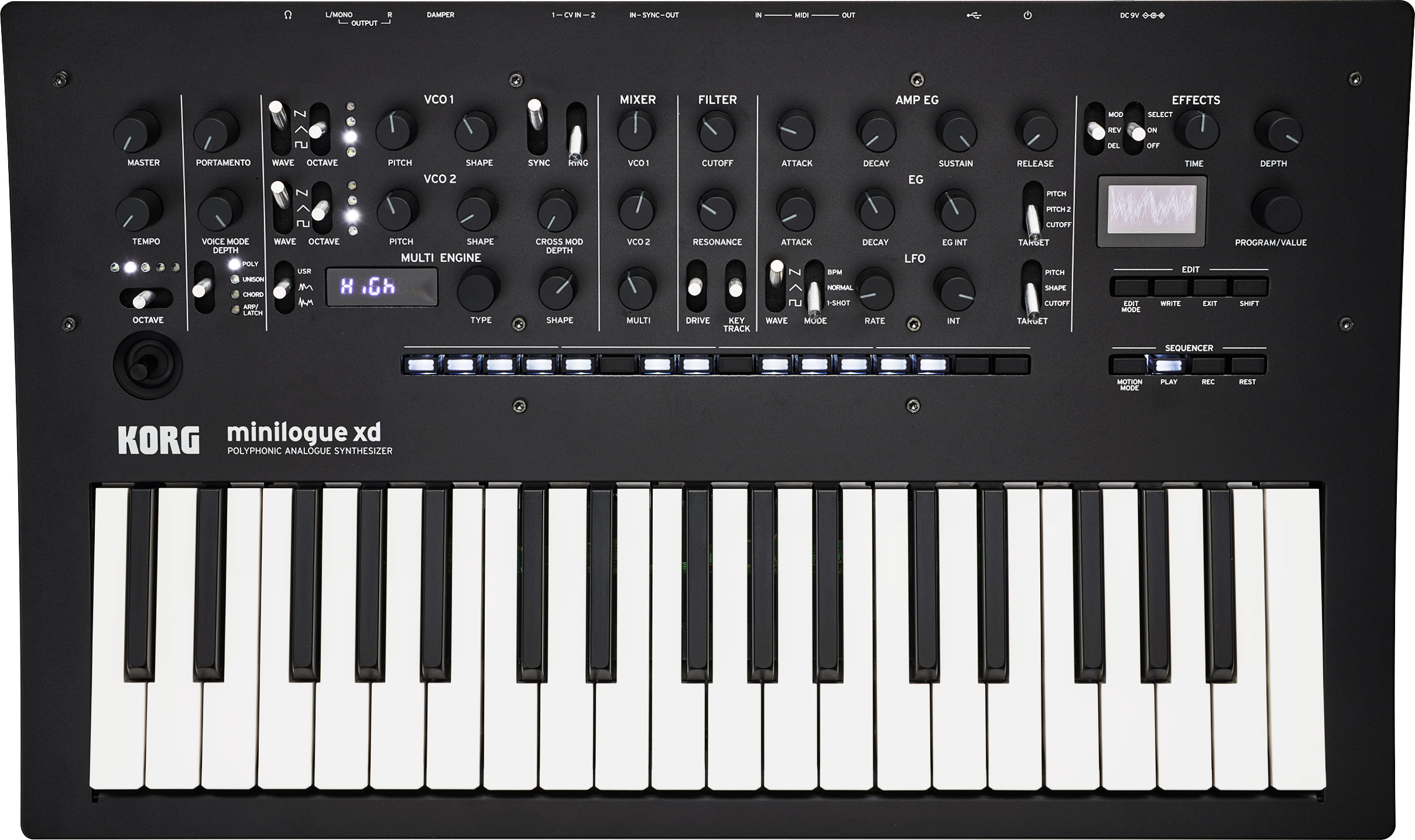
These modern takes on bass aren’t entirely confined to the analogue realm, though. Novation’s Bass Station II, Korg’s Monologue and Arturia’s Brute range are all hardware synths capable of cross-modulation with enough grunt to spew out nasty bass patches for days, with the bonus of hands-on control and tweakability.
Hybrid analogue/digital synths, meanwhile, such as UDO’s Super 6, Arturia’s Mini/MicroFreak and Korg’s Minilogue XD, all offer the combination of analogue grit and digital complexity.
- Read more synth stories and features: at Synth Week 2024 here!






